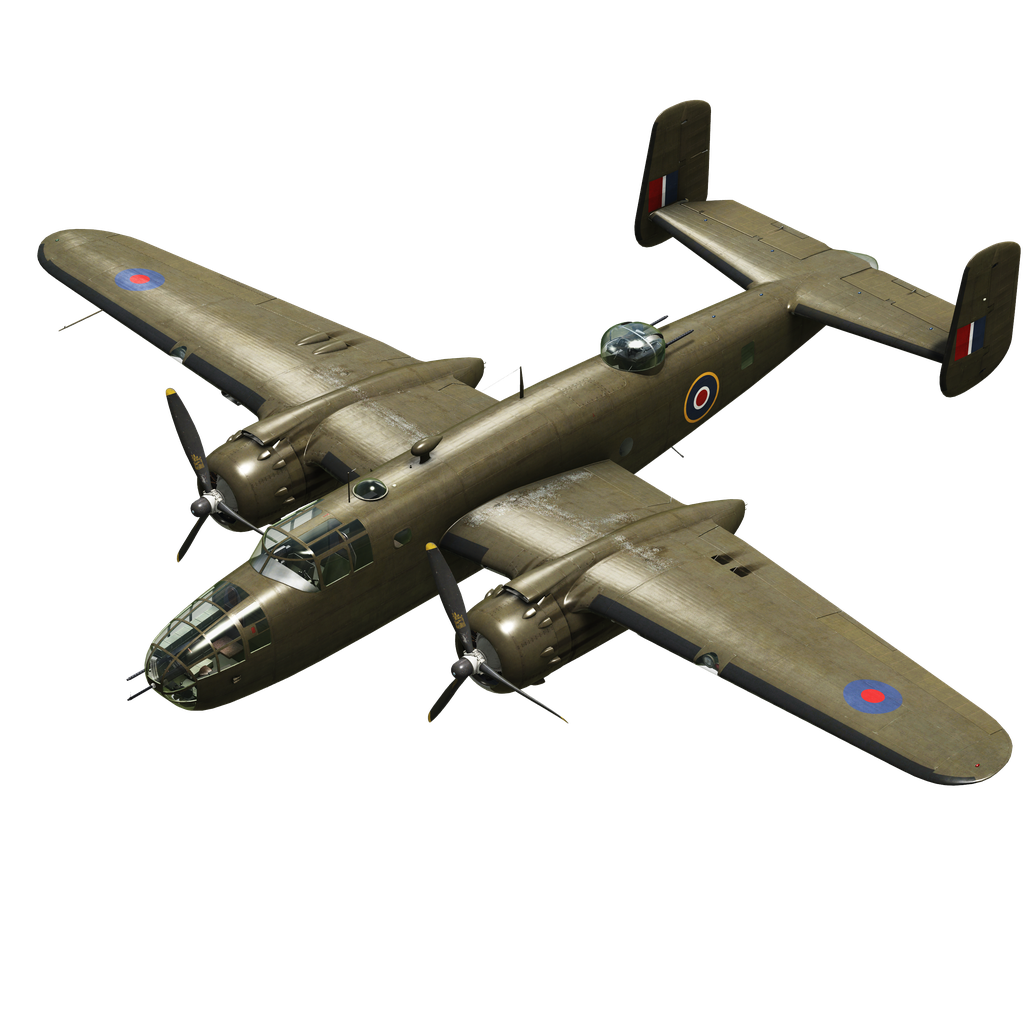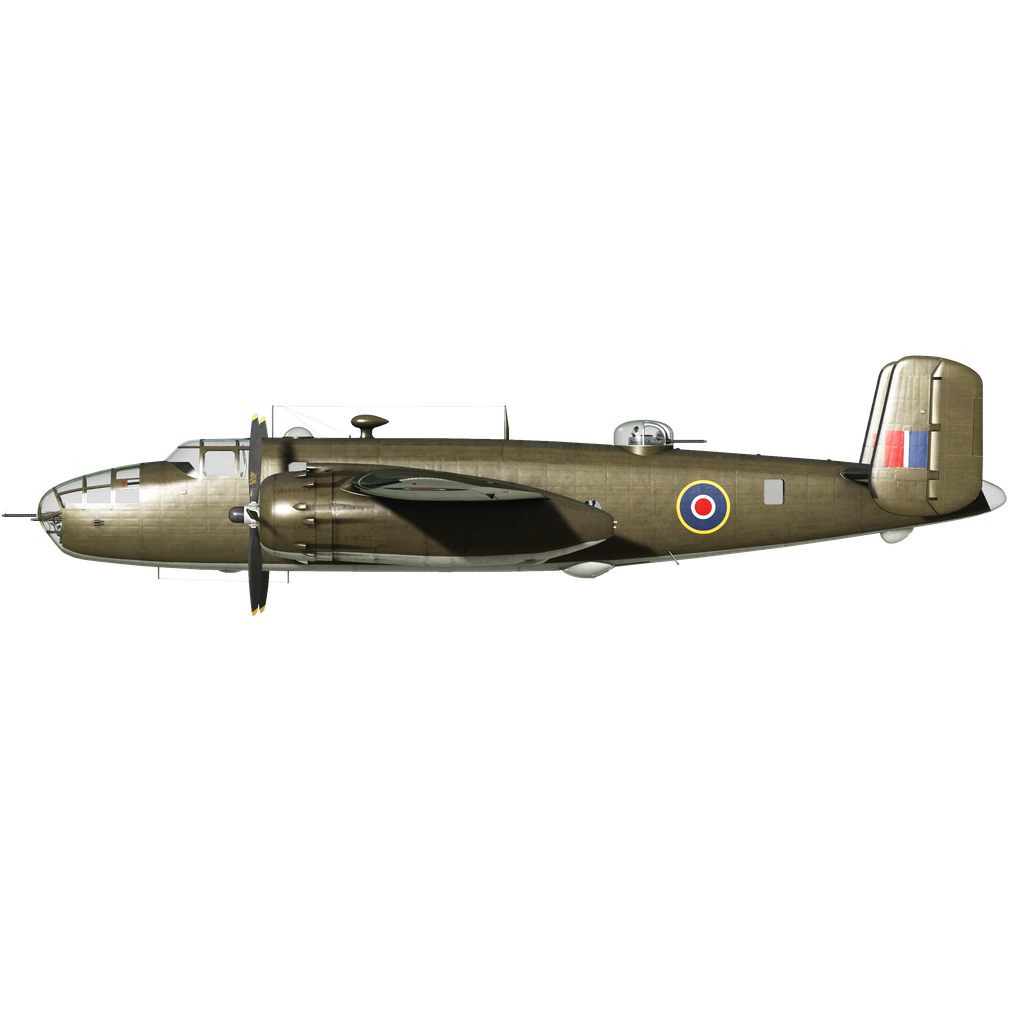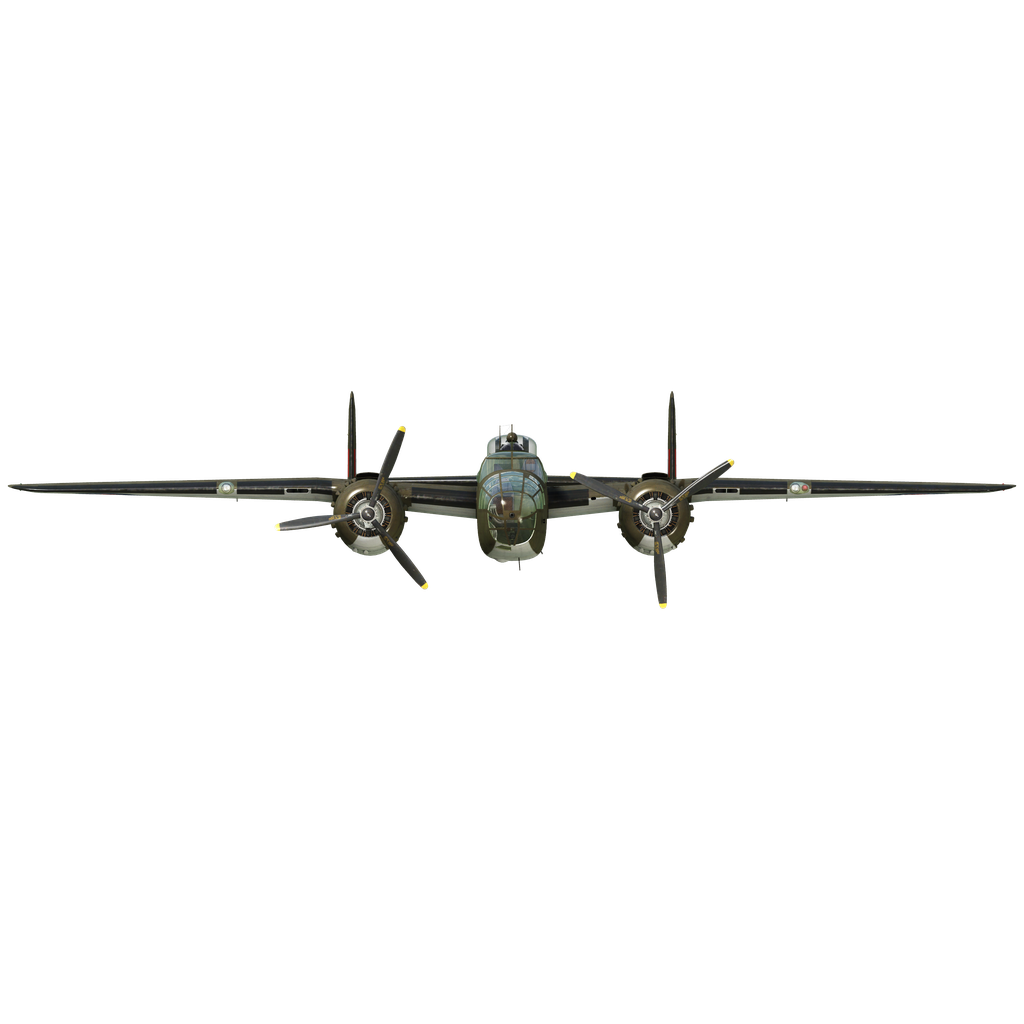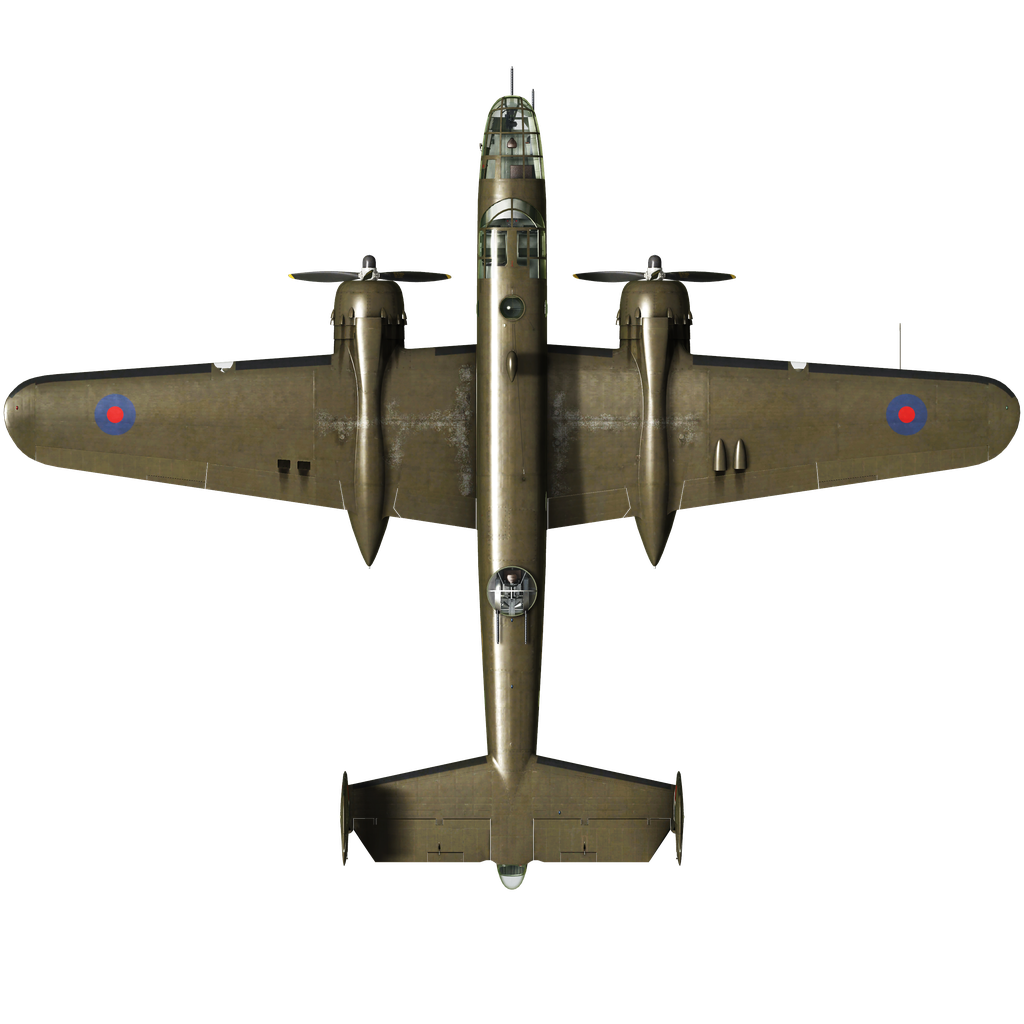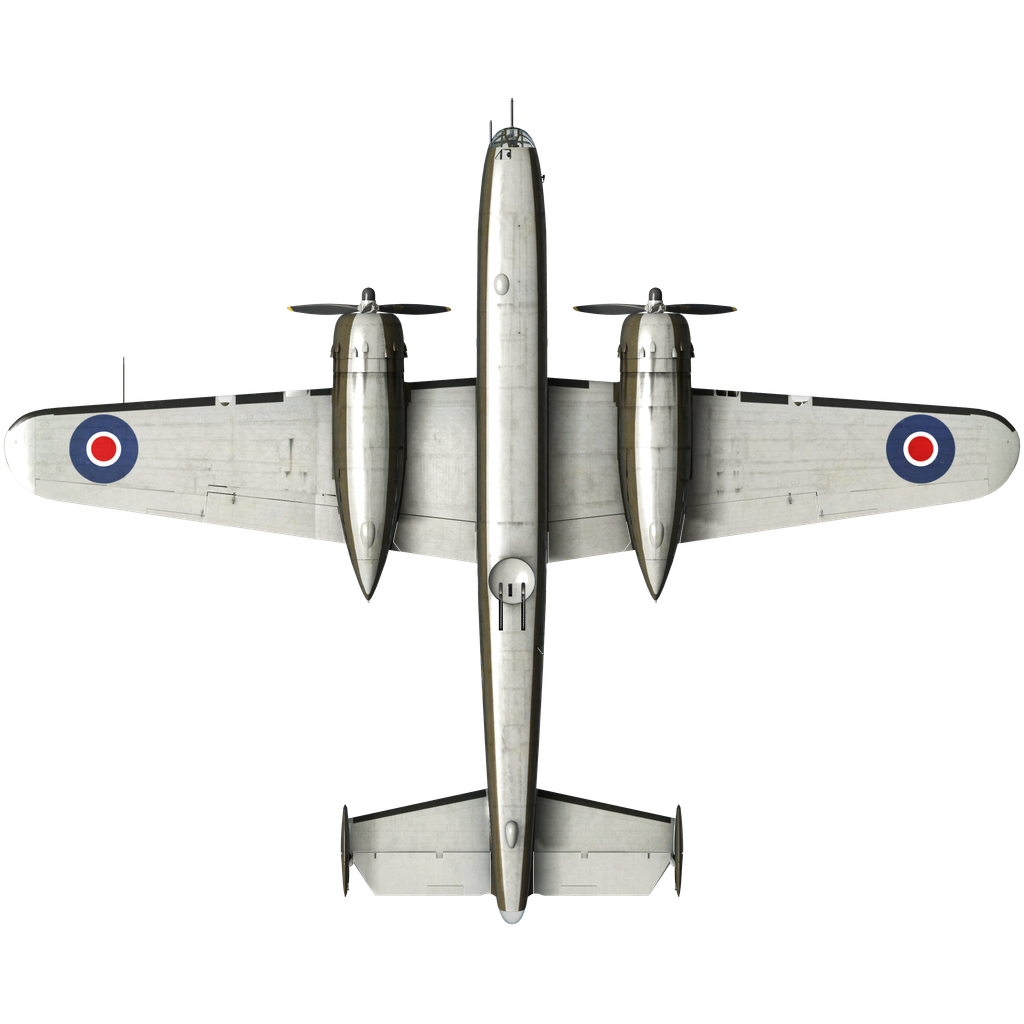Built by North American for the US Army Air Corps, this medium bomber, powered by Wright "Cyclone" engines, first flew on August 19, 1940. The aircraft was officially designated the B-25 "Mitchell" in honor of Brigadier General William Mitchell, considered the father of American aviation. Improvements to the B-25 took into account the use of bombers in the various theaters of war. Production of the B-25D modification began in June 1941.
The B-25D was a twin-engine, all-metal monoplane without external support struts. It had a crew of five: two pilots, a bombardier, a navigator, and a gunner/radioman. The forward section of the fuselage housed the bombardier's compartment and forward-firing armament, with the pilot's compartment behind and above. The navigator sat behind the pilots. His compartment in the upper fuselage had an astronavigation window, later replaced by a convex bubble. The tail was a two-finned cantilever design. The elevator and rudder were made of metal and covered with fabric.
The B-25D, like the B-25C series, was powered by the new Wright "Cyclone" R-2600-13 engines rated at 1,700 hp.
The aircraft received an anti-icing system and an autopilot, and the tail skid was replaced by a fixed skid in a fairing. The B-25D-10 received additional equipment: the aircraft were adapted for use in the Soviet far north and were equipped with an AM compass and an emergency gear release system. In the B-25D-15 series, the nacelles were redesigned: each cylinder now had its own exhaust port, giving the nacelle cover a distinctive appearance. The D-20 series was distinguished by a cockpit canopy with less framing, as well as the presence of an armored backrest on the co-pilot's seat. Additional self-sealing fuel tanks were installed in the bomb bay, and all other aircraft had an additional tank. The B-25D-25 series was characterized by the presence of portable oxygen devices, and the D-30s were prepared for operation in winter conditions. In the Soviet Union, the aircraft was equipped with a system for filling the empty space of the tanks with inert gas.
The small arms armament depended on the modification. In the early series of the D-modification, a 7.62 mm machine gun was mounted in the nose of the bombardier’s compartment with 3 mounts, and the machine gun could be quickly moved from one to another, which extended the field of fire. In the upper and lower (retractable) turrets, there were 2 large-caliber machine guns. The turrets were rotated and the barrels were raised and lowered by electric drives. The lower turret was retracted and extended manually. In the later series, a 12.7 mm fixed machine gun was mounted in the front and the 7.62 mm machine gun in the ball socket was replaced by a large caliber machine gun. The movable machine gun could be fixed in position to fire forward. On the D-30 and D-35 series and later modifications, the lower turret was removed, but a second fixed machine gun was added at the front, and side-mounted 12.7 mm machine guns were added in the windows behind the wing, as well as a rear pin mount.
Initially, the B-25Ds were no different from the B-25Cs, but the B-25D-1 series introduced external bomb racks under the wings and torpedo suspension mounts under the fuselage.
The B-25D was produced until March 1944, with a total of 2,290 produced. The aircraft was delivered to more than just the US Army Air Forces.
The Royal Air Force received 371 B-25Ds. In Great Britain, the B-25C and D were given the same designation, Mitchell Mk. II. They were fitted with British equipment such as radios, bomb sights, etc., and could be fitted with British bombs.
The USSR received 862 aircraft of various modifications, including the B-25D. The Soviets considered it a reliable and easy-to-operate machine, superior to the IL-4. The B-25 was in service with the Long Range Aviation from 1942 to 1953.
The Mitchell played a major role in the Pacific: B-25s operated throughout the Pacific theater, from Burma to New Guinea and Alaska. Island operations were conducted in the absence of good concrete runways, a continuous front line, and well-organized air defenses.
Because the B-25 was undemanding, easy to maintain, easy to operate, and capable of long-range flight, it became the primary heavy machine of this theater. The B-25s terrorized Japanese positions and the coastal islands, strafing and dropping bombs on everything from supply ships to firing positions.
1. "American Warplanes of World War II" by David Donald, 1995
2. V. Kotelnikov "B-25 "Mitchell" Bomber" Journal "Aviakollektsiya" ¹2 2003. 3.
3. materials of the site airwar.ru
